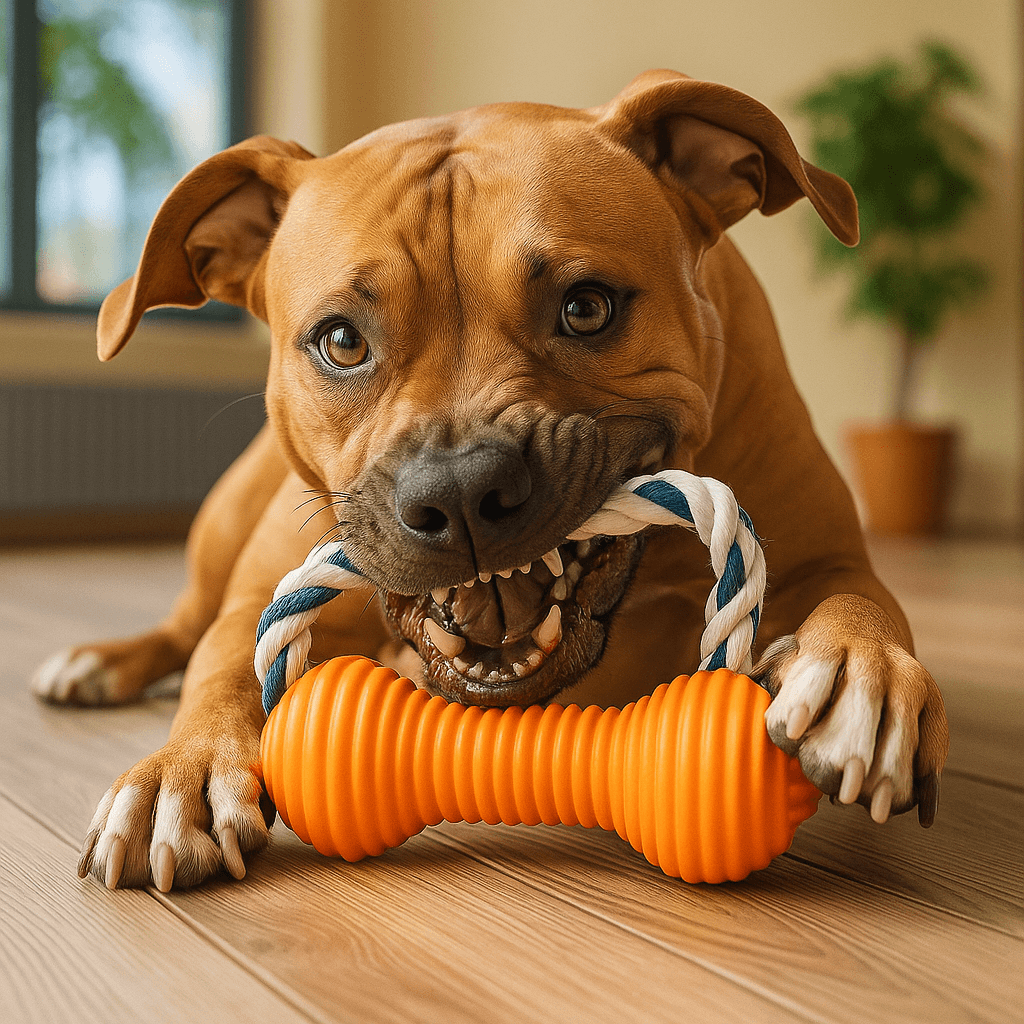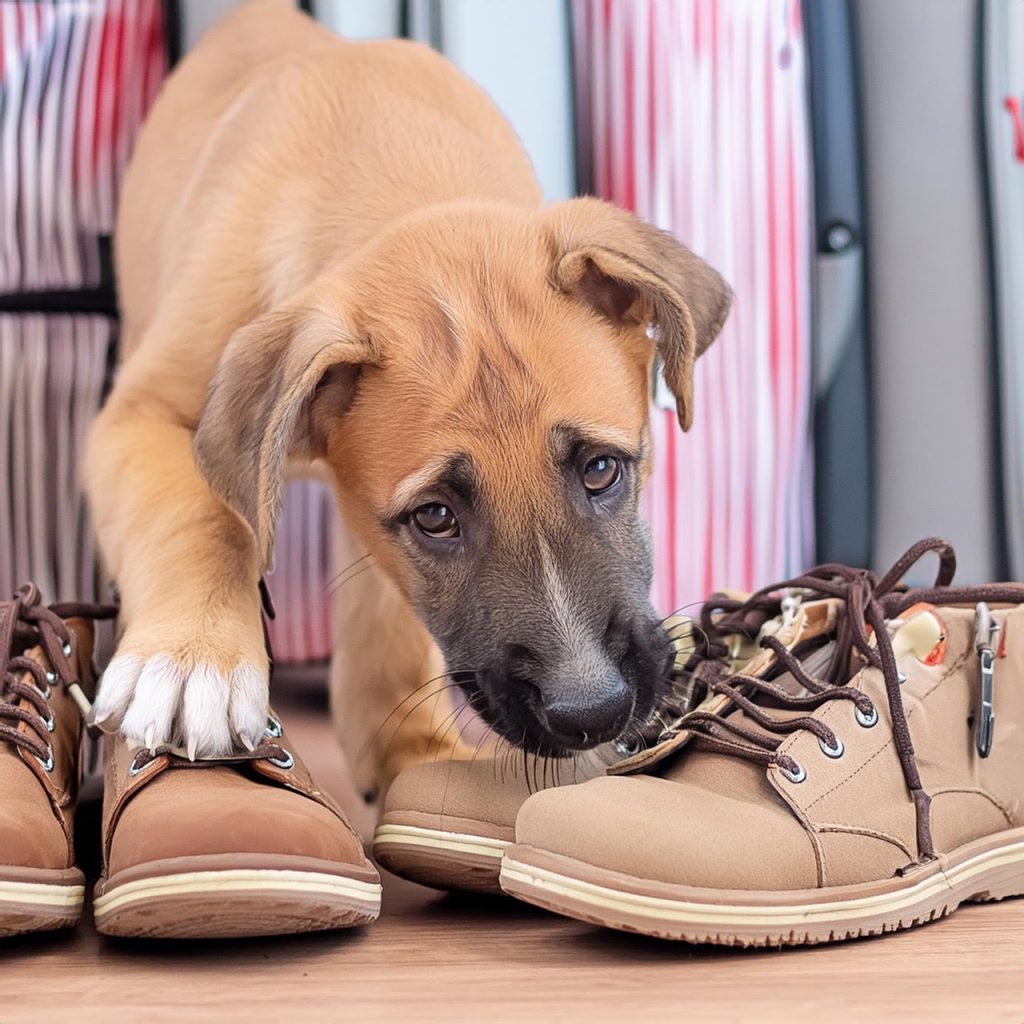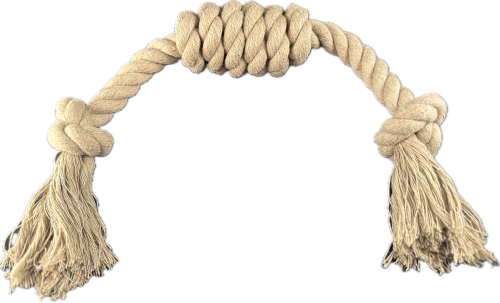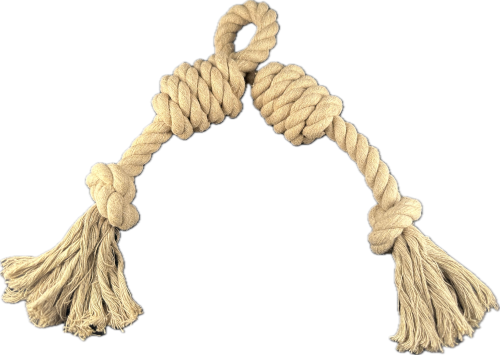
Aggressive chewing can be caused by various factors, including genetics, diet, stress levels in your home, or even the lack of having dog toys for aggressive chewers. It can be difficult for owners to know when their dog will start acting up, and sometimes it can take time for them to realize that there is a problem. In this article, we explore why your pet might be one of the most aggressive chewers around and provide tips on what you can do to help!
Why do dogs chew?

Dogs, particularly pups, are exceedingly playful and curious. While play with humans and other dogs is essential for socialization and growth, exploration and object play are necessary for a dog’s environmental education. It is therefore typical for pups to investigate their surroundings by sniffing, tasting, and possibly biting on objects throughout the house.
Dogs who chew may be searching for food (as in garbage raiding), playing (as in the dog that rips up a book or couch), teething (dogs 3 to 6 months old that chew on household objects), or satisfying an innate drive to chew and gnaw (which may serve to help keep teeth and gums healthy). Some dogs may chew because they receive attention (even if it is unpleasant) or goodies from their owners each time they chew. Still, by offering attention, the owners unwittingly reinforce the behavior.
Chewing and aggressive behavior may also be anxiety-related responses. In an attempt to escape, dogs that are confined in insecure environments may dig and chew. Dogs experiencing conflict, arousal, or worry, such as separation anxiety, may resort to chewing and other destructive behaviors as an outlet.
Types of Aggressive Chewers
Dogs are renowned as devoted and affectionate companions, yet they may also be violent chewers. There are numerous reasons a dog may become a chewer, and it’s crucial to identify the type of chewer your pet is to manage the issue effectively. The three primary types of aggressive chewers are as follows:
- Destructive Chewer: This type of pet is typically quite territorial and chews on anything that enters its domain, including furniture, shoes, and other animals. They may also consume human property, like as clothing and skin.
- The Scratching Chewer: These dogs repeatedly scrape furniture, walls, and other items in search of something to attach themselves to. They may even begin to chew on humans if they feel neglected or bored.
- The Digging Chewer: These animals dig compulsively through the soil, snow, or other substances. Such as buried bones or food. This can damage chewing habits in indoor and outdoor areas if left unchecked.
Reasons for Aggressive Chewing
Dogs may develop chewing habits for various reasons. Some dogs have a natural propensity to chew, often due to their strong jaw muscles. However, common causes of aggressive chewing behavior towards toys can often be easily addressed by providing dog toys for aggressive chewers.
Boredom is one of the causes of aggressive chewing. If your dog is not receiving enough mental and physical exercise, he may use chewing objects for entertainment. To prevent this issue, ensure that your pet has many outdoor play and exercise opportunities. Also, consider putting away all chew toys when your dog has had enough. This will teach him that toys are meant for fun, not destruction.
It’s possible your dog feels territorial or threatened if he is biting and gnawing on humans and other animals. You can attempt to train your dog using positive reinforcement tactics, such as obedience training and treats. If these techniques fail, you may need to take steps to protect yourself or your pet from aggressive behavior. For instance, placing wire fencing around your home and restraining your dog when misbehaving are effective deterrents against attacks.
Address Aggressive Chewers
Determine first why the dog is chewing. Play, curiosity, and teething are likely causes for a puppy or young dog chewing on a range of household things.
Dogs who rummage through trash cans and steal food from countertops are motivated by the presence and odor of food. Dogs who chew on doorways or cage doors may be striving to escape captivity… others may be chewing to cope with anxiety. Establishing a treatment plan is crucial to identifying the source and motive for chewing.
Keep a log of the pet’s daily activities to establish when and where it chews. Track what occurred immediately before the action, and what family members do when they catch the pet chewing.
In addition, the diary can assist in establishing if the dog’s daily plan provides sufficient enrichment and a consistent pattern that meets all of its demands. Although treatment aims to eliminate unwanted chewing, the emphasis should be on giving adequate stimulation and outlets and rewarding desirable behavior. If the chewing occurs while you are absent, videotaping the habit may assist in identifying if anxiety is the cause.
For the adventurous dog, it’s crucial to redirect chewing to more appropriate alternatives and provide ample play and exercise to prevent inappropriate chewing. Avoid inadvertently reinforcing undesirable behavior by ignoring the dog when it chews inappropriately; this prevents the dog from receiving attention as a reward for bad behavior. Additionally, using devices such as interactive toys or puzzle feeders can help manage this behavior.
This habit may diminish over time in puppies if sufficient daily play and exercise are provided. The chewing is then directed toward appropriate outlets. Since the behavior is self-rewarding, dogs who raid garbage must be managed through monitoring, prevention, and using deterrents. Such as surprising booby traps.
How to encourage proper chewing?
Before discussing how to refocus aggressive chewers, you must meet your dog’s “needs”. They include chewing and physical activity, social interaction, object play, and exploratory behavior.
🐶 Dog Toys for Aggressive Chewers: Choose the Right Chew
Encourage your dog to chew appropriately by offering Dog Toys for Aggressive Chewers that match their instincts. Start with options that vary in flavor, scent, and texture to find what your dog responds to best.
Nylon toys are excellent for durability and longevity. However, dogs often find toys that can be torn apart more irresistible—like rawhide, pig ears, or natural prey mimics. These satisfy their primal urge to chew, rip, and explore, making them especially effective for high-intensity chewers.
🧈 Enhance Appeal with Stuffed Toys
Coating or stuffing toys with liver spread, cheese, unsweetened peanut butter, or food particles can increase their appeal. Many durable rubber toys are specifically designed to be filled with treats or food, requiring your dog to chew and manipulate the toy to access the rewards. Some products even come pre-flavored or are made for stuffing.
❄️ Freeze for Extended Play
Freezing dog toys filled with soup, canned dog food, or meat can prolong playtime and boost interest. This is an excellent way to keep your dog mentally stimulated and physically occupied, especially when you’re unable to supervise. You can even place some or all of their meals in these toys to turn feeding into a mentally enriching activity.
🦷 Support Oral Health While Chewing
Toys, treats, and food designed to promote dental hygiene can reduce unwanted chewing and improve oral health. Textured items that encourage gnawing and chewing are especially beneficial for aggressive chewers. Avoid foods that are too soft or easy to swallow, as they don’t satisfy the instinct to chew.
👀 Supervise and Guide Toy Behavior
Always supervise your pup during play to reward proper toy use and discourage chewing on household items. When unsupervised, restrict their access to anything you don’t want destroyed—except for their designated chew toys.
In conclusion, understanding why your dog engages in aggressive chewing is essential for effective management. Whether change in environment or expressing discontent with discipline, guiding their chewing towards appropriate outlets can make a significant difference. For dogs chewing out of discomfort or fear, seeking veterinary evaluation ensures they receive the care they need. Together, we can help your tough pup find satisfaction in safe and durable playtime options.
- American Kennel Club : Why Does My Dog Chew My Furniture and Baseboards?
- Web MD: Tips for Better Dental Health in Dogs




